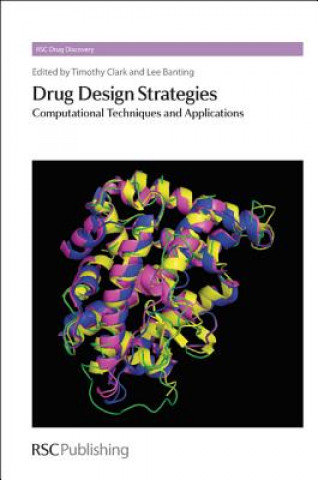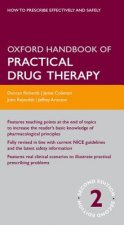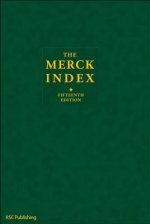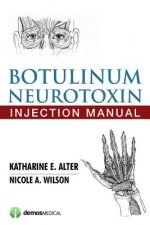
Kód: 04471639
Drug Design Strategies
Autor David J Livingstone
This book brings together drug design practitioners, all leaders in their field, who are actively advancing the field of quantitative methods to guide drug discovery, from structure-based design to empirical statistical models - f ... celý popis
- Jazyk:
 Angličtina
Angličtina - Väzba: Pevná
- Počet strán: 516
Nakladateľ: Royal Society Of Chemistry, 2011
- Viac informácií o knihe

Mohlo by sa vám tiež páčiť
-

Dramatic Works of William Shakespeare; Illustrated
37.60 € -

Goorg-Chee
24.73 € -

Hanuman
18.39 € -13 % -

Practical Guide to Forensic Psychotherapy
56.20 € -

Star Trek Volume 1
19 € -25 % -

Nature of the Crown
304.47 € -

Him/Her/Self
37.50 €
Darčekový poukaz: Radosť zaručená
- Darujte poukaz v ľubovoľnej hodnote, a my sa postaráme o zvyšok.
- Poukaz sa vzťahuje na všetky produkty v našej ponuke.
- Elektronický poukaz si vytlačíte z e-mailu a môžete ho ihneď darovať.
- Platnosť poukazu je 12 mesiacov od dátumu vystavenia.
Viac informácií o knihe Drug Design Strategies
Nákupom získate 603 bodov
 Anotácia knihy
Anotácia knihy
This book brings together drug design practitioners, all leaders in their field, who are actively advancing the field of quantitative methods to guide drug discovery, from structure-based design to empirical statistical models - from rule-based approaches to toxicology to the fields of bioinformatics and systems biology. The aim of the book is to show how various facets of the drug discovery process can be addressed in a quantitative fashion (ie: numerical analysis to enable robust predictions to be made). Each chapter includes a brief review of the topic showing the historical development of quantitative approaches, a survey/summary of the current state-of-the-art, a selection of well chosen examples with some worked through and an appreciation of what problems remain to be overcome as well as an indication of how the field may develop. After an overview of quantitative approaches to drug design the book describes the development of concepts of "drug-like properties", of quantitative structure-activity relationships and molecular modelling, and in particular, structure-based design approaches to guide lead optimisation. How to manage and describe chemical structures, underpins all quantitative approaches to drug design and these are described in the following chapters. The next chapter covers the value of a quantitative approach, and also the challenge which is to describe the confidence in any prediction, and methods to assess predictive model quality. The later chapters describe the application of quantitative approaches to describing and optimising potency, selectivity, drug metabolism and pharmacokinetic properties and toxicology, and the design of chemical libraries to feed the screening approaches to lead generation that underpin modern drug discovery. Finally the book describes the impact of bioinformatics, current status of predicting ligand affinity direct from the protein structure, and the application of quantitative approaches to predicting environmental risk. The book provides a summary of the current state-of-the-art in quantitative approaches to drug design, and future opportunities, but it also provides inspiration to drug design practitioners to apply careful design, to make best use of the quantitative methods that are available, while continuing to improve them. Drug discovery still relies heavily on random screening and empirical screening cascades to identify leads and drugs and the process has many failures to deliver only a small handful of drugs. With the rapidly escalating costs of drug discovery and development together with spiralling delivery, quantitative approaches hold the promise of shifting the balance of success, to enable drug discovery to maintain its economic viability.
 Parametre knihy
Parametre knihy
Zaradenie knihy Knihy po anglicky Medicine Other branches of medicine Pharmacology
239.82 €
- Celý názov: Drug Design Strategies
- Autor: David J Livingstone
- Jazyk:
 Angličtina
Angličtina - Väzba: Pevná
- Počet strán: 516
- EAN: 9781849731669
- ISBN: 1849731667
- ID: 04471639
- Nakladateľ: Royal Society Of Chemistry
- Hmotnosť: 910 g
- Rozmery: 241 × 158 × 34 mm
- Dátum vydania: 10. November 2011
Obľúbené z iného súdka
-

New Bach Flower Therapies
15.17 € -15 % -

New Bach Flower Body Maps
24.73 € -

Rang & Dale's Pharmacology
68.37 € -2 % -

Prescriber's Guide - Children and Adolescents: Volume 1
63.64 € -

ESC Handbook on Cardiovascular Pharmacotherapy
82.25 € -

Schaum's Outline of Pharmacology
36.19 € -

Toxin Solution
18.09 € -

Prescriber's Guide: Antipsychotics
43.33 € -

Poisoner's Handbook
16.08 € -14 % -

Color Atlas of Pharmacology
46.55 € -5 % -

Netter's Illustrated Pharmacology Updated Edition
62.84 € -5 % -

Community Pharmacy
53.39 € -15 % -

A is for Arsenic
12.56 € -20 % -

Peyote and Other Psychoactive Cacti
13.56 € -15 % -

Disulfiram and its Metabolite, Diethyldithiocarbamate
71.49 € -

Fundamentals of Pharmacognosy and Phytotherapy
54.39 € -14 % -

Brenner and Stevens' Pharmacology
67.16 € -15 % -

Clinical Challenges in Therapeutic Drug Monitoring
67.46 € -

Stahl's Illustrated Anxiety, Stress, and PTSD
71.18 € -

Age of Anxiety
31.97 € -

Bartram's Encyclopedia of Herbal Medicine
16.28 € -23 % -

Oxford Handbook of Practical Drug Therapy
45.44 € -1 % -

Health from God's Garden
15.17 € -15 % -

Case Files Pharmacology, Third Edition
51.98 € -

Merck Index
151.63 € -

Cannabis Alchemy
16.88 € -14 % -

Truth About the Drug Companies
16.28 € -23 % -

Stahl's Illustrated Antipsychotics
71.18 € -

Manual of Chinese Herbal Medicine
28.75 € -

Pharmacognosy
198.89 € -

Clinical Pharmacy Education, Practice and Research
166.11 € -

Clinical Pharmacology
65.15 € -10 % -

Metals in Medicine 2e
100.24 € -

Druid's Herbal for the Sacred Earth Year
13.56 € -14 % -

Clarke's Analytical Forensic Toxicology
90.39 € -

Chelation Controversy
20.10 € -

Handbook of Antioxidants
158.37 € -

Pharmacist Guide to Implementing Pharmaceutical Care
209.15 € -

Botulinum Neurotoxin Injection Manual
93.11 € -

Botulinum Toxin in Aesthetic Medicine
179.08 € -

Veterinary Toxicology
148.81 € -9 % -

Pharmacognosy and Phytotherapy
161.48 € -

Case Studies: Stahl's Essential Psychopharmacology
80.84 € -

Principles of Clinical Pharmacology
166.11 € -

Plumer's Principles and Practice of Infusion Therapy
127.29 € -

Hair Analysis in Clinical and Forensic Toxicology
133.23 € -

Prescriber's Guide: Antidepressants
76.82 € -

Colloidal Silver
14.47 € -15 % -

Handbook of Drug Administration via Enteral Feeding Tubes
77.92 €
Osobný odber Bratislava a 2642 dalších
Copyright ©2008-24 najlacnejsie-knihy.sk Všetky práva vyhradenéSúkromieCookies



 21 miliónov titulov
21 miliónov titulov Vrátenie do mesiaca
Vrátenie do mesiaca 02/210 210 99 (8-15.30h)
02/210 210 99 (8-15.30h)